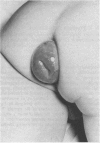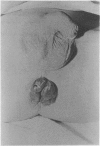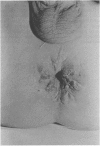Abstract
Some of the factors thought to be responsible for rectal prolapse in children are reviewed. In the United Kingdom management has in the past been conservative. It is suggested that children should be treated at an early stage by means of an injection of phenol in almond oil, in order to reduce the discomfort of recurrent manipulative reductions of the prolapse in the child and alleviate the anxiety of the parents. In 18 cases treated during the past 3 years a single injection performed under general anaesthesia, as a day case, was successful in preventing further prolapse of the rectum.
Full text
PDF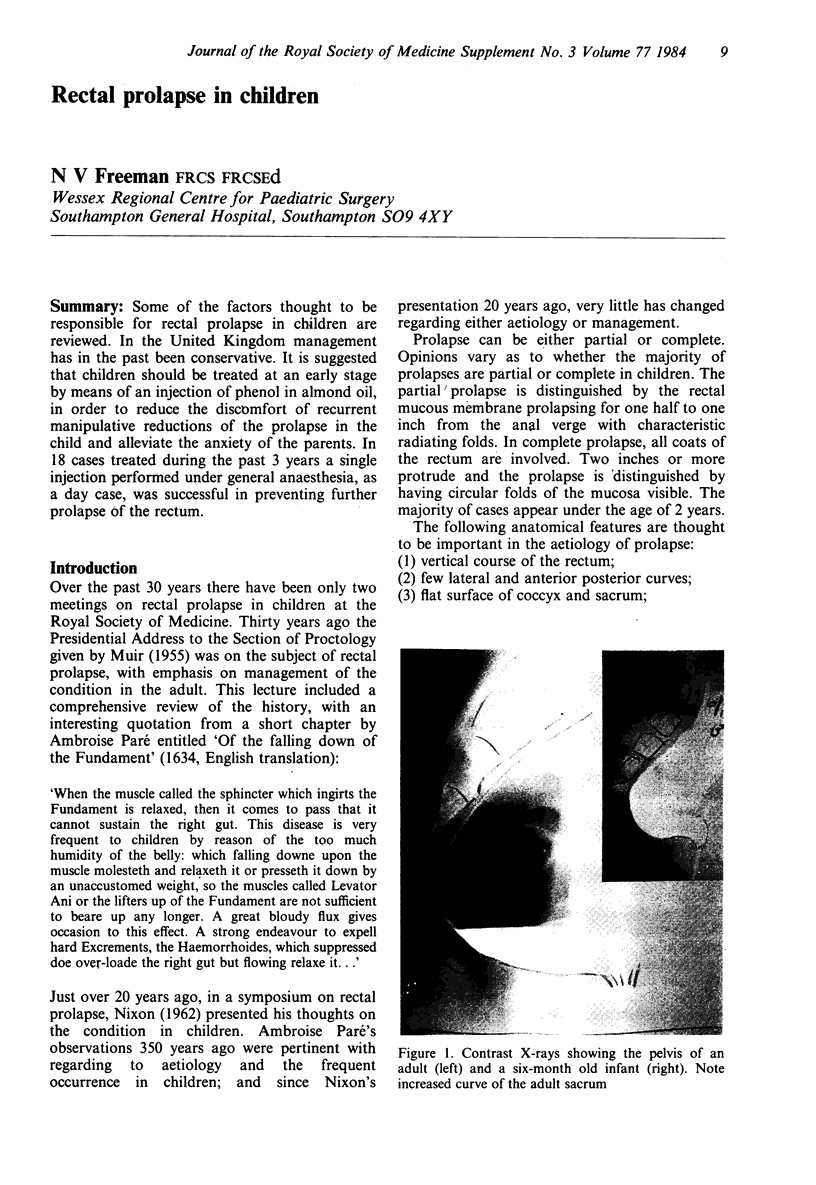
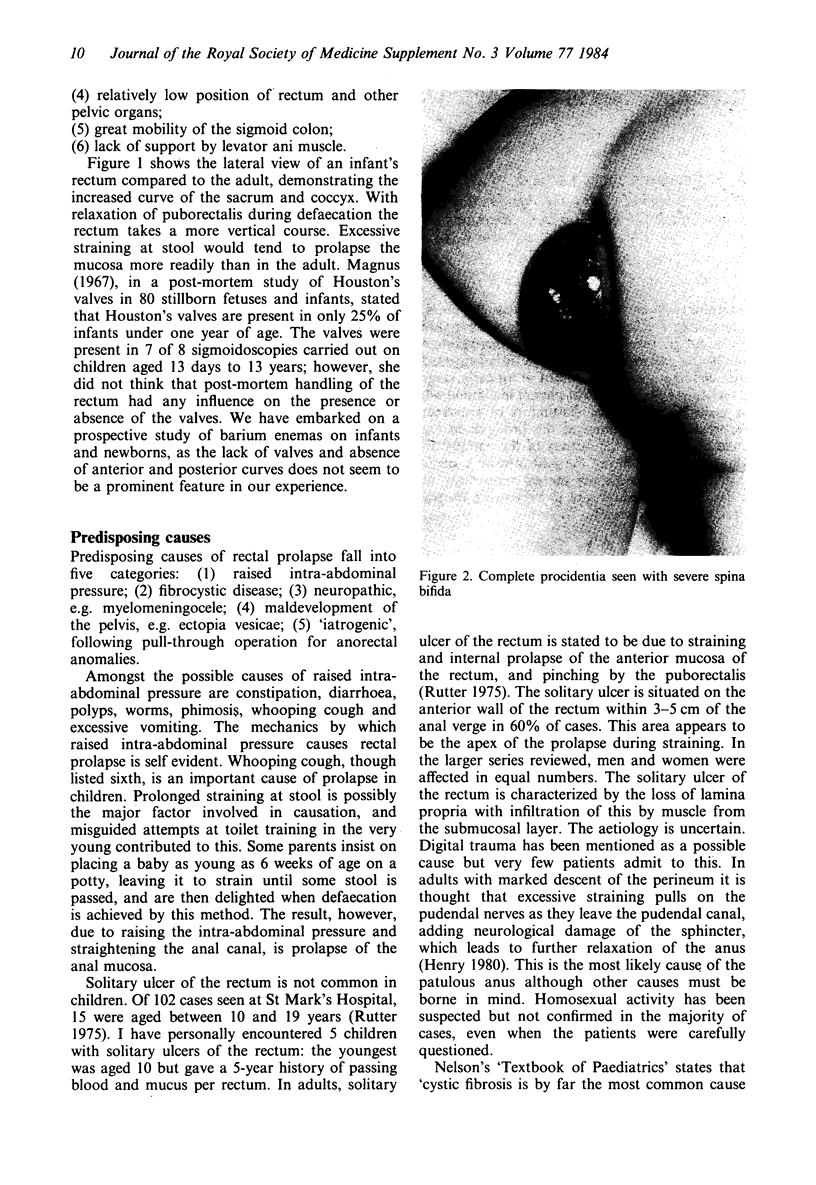
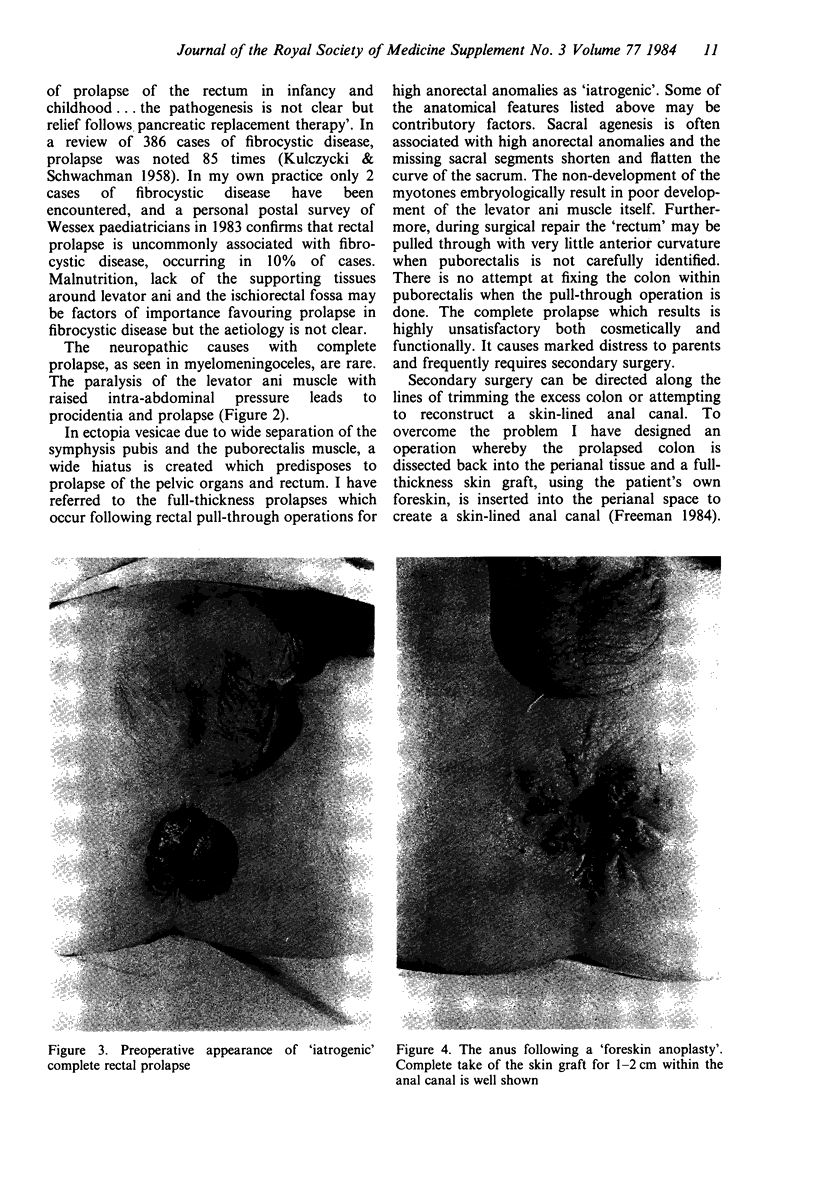

Images in this article
Selected References
These references are in PubMed. This may not be the complete list of references from this article.
- Freeman N. V. The foreskin anoplasty. Dis Colon Rectum. 1984 May;27(5):309–313. doi: 10.1007/BF02555638. [DOI] [PubMed] [Google Scholar]
- KULCZYCKI L. L., SHWACHMAN H. Studies in cystic fibrosis of the pancreas; occurrence of rectal prolapse. N Engl J Med. 1958 Aug 28;259(9):409–412. doi: 10.1056/NEJM195808282590901. [DOI] [PubMed] [Google Scholar]
- MUIR E. G. Rectal prolapse. Proc R Soc Med. 1955 Jan;48(1):33–44. [PMC free article] [PubMed] [Google Scholar]
- Rutter K. R. Solitary rectal ulcer syndrome. Proc R Soc Med. 1975 Jan;68(1):22–26. [PMC free article] [PubMed] [Google Scholar]
- Wyllie G. G. The injection treatment of rectal prolapse. J Pediatr Surg. 1979 Feb;14(1):62–64. doi: 10.1016/s0022-3468(79)80578-3. [DOI] [PubMed] [Google Scholar]




